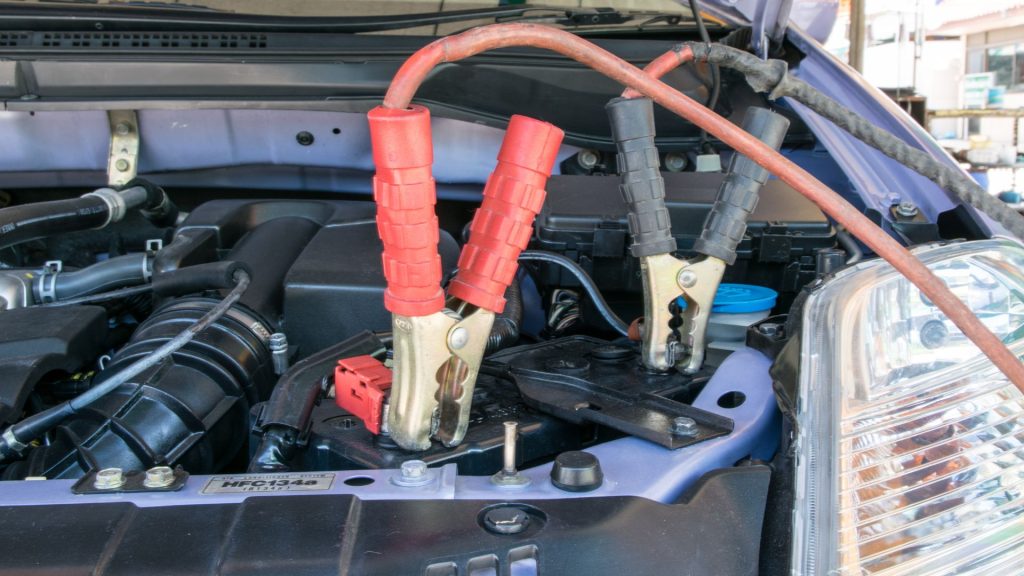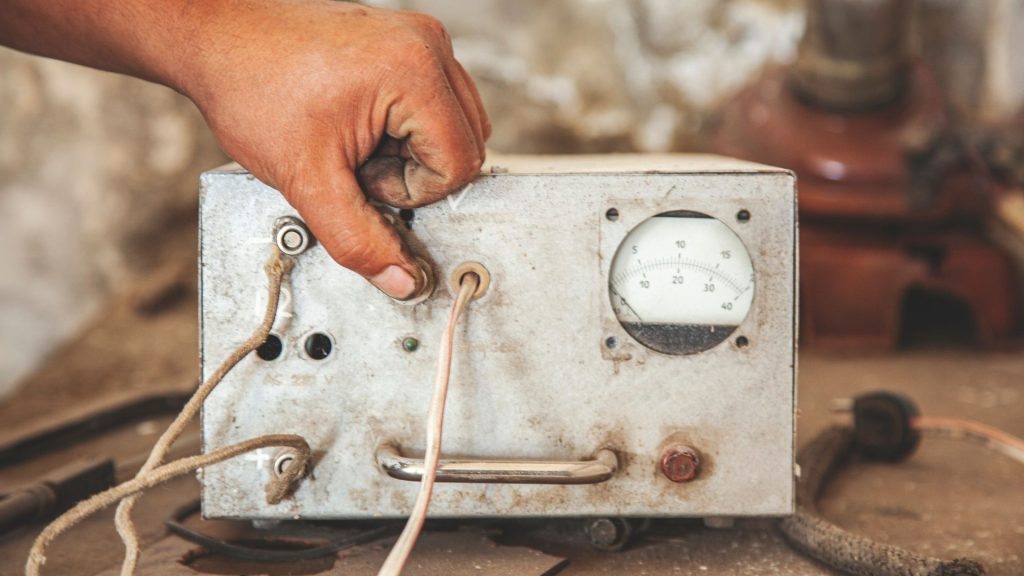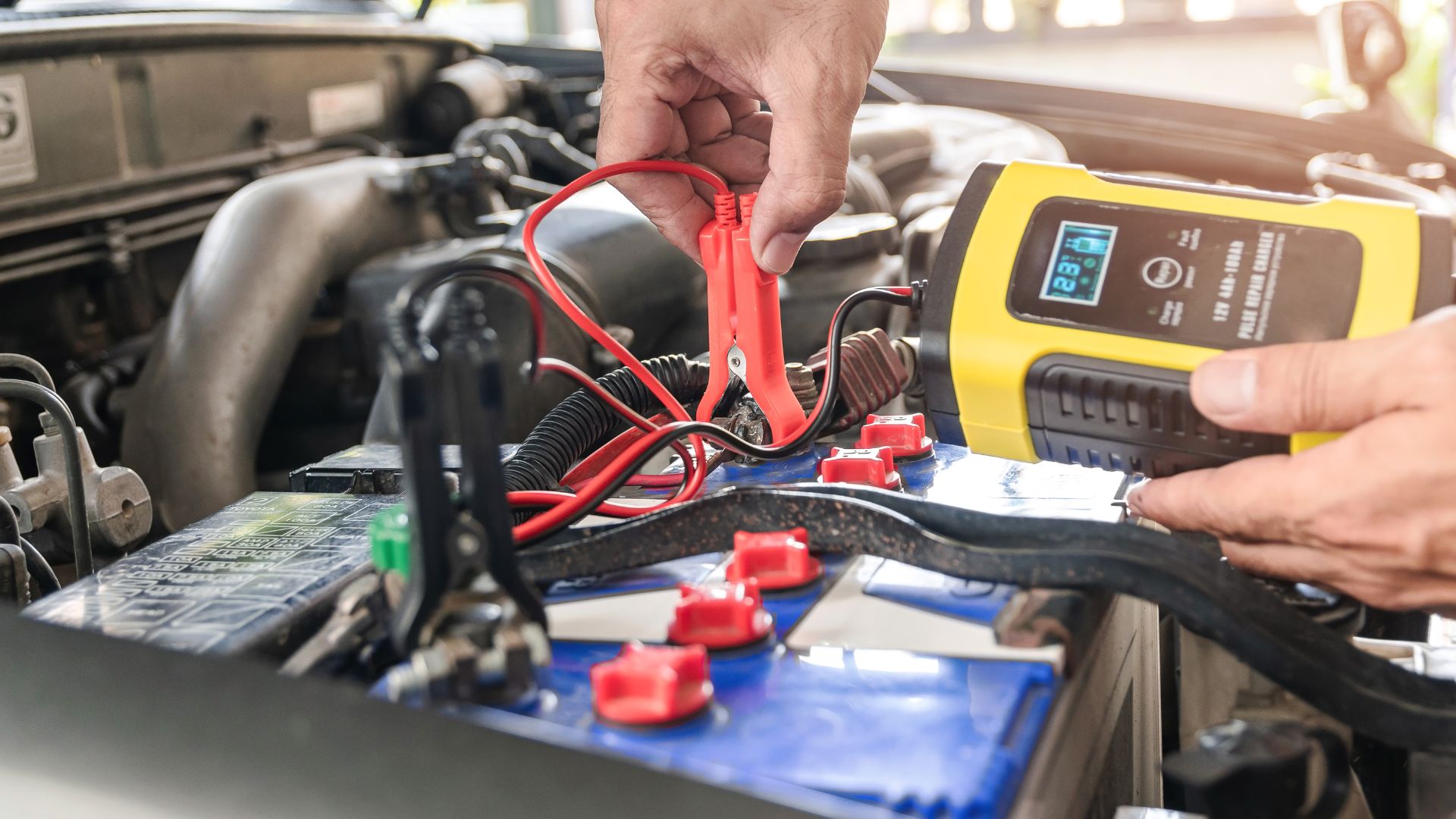Zero amps on a battery charger shouldn’t scare you. These readings will appear because of one or more of the following factors:
1). Flat Battery
Is your battery flat? Experts will encourage you to charge your battery before it hits zero. But if the worst comes to pass and your battery discharges completely, it won’t respond when you connect a charger, at least not initially.
The amp meter stay at 0 amps (or near it). However, after fifteen minutes, the amp meter will gradually rise, showing that your battery has started accepting the charge.
2). Loose Connection
Loose connections are a common problem among electronic devices. In the case of a battery, the amp meter will show 0 amps because of bad connections. You can confirm your theory by wiggling the connections at the clamps.

The connection is bad if the amp meter’s readings jump momentarily before falling back to 0 amps. Be careful. Loose connections can cause arcing. This is why experts encourage consumers to wear protective gear before handling batteries. That includes goggles.
3). Full Charge
The amperage on the meter will rise when the charging process starts. It may stay at zero when the battery is fully discharged. But eventually, the readings will increase. However, the amps will gradually fall as the charging process approaches the final stage. The amps hit zero once the battery is fully charged.
4). Dead Battery
A battery with zero amps is probably dying. Batteries do not last forever. Eventually, they fail. You shouldn’t panic until you confirm your theory using the following steps:
- Look for physical signs of damage, such as discoloration, broken terminals, cracking, swelling, etc. Short circuits produce burn marks, melting, and strange odors. Swelling can originate from overcharging. Mishandling will produce cracks and breaks.
- Test the voltage. 0 volts point to a short circuit. If a 12V battery’s readings won’t exceed 10.5 volts during the charging process, the battery has a dead cell. If the voltage on a fully charged battery is less than 12.4, sulfuration is at fault. Sulfuration can prevent a battery from attaining a full charge. It can also discharge the battery at a faster rate.
- Perform a load test. The battery should maintain the correct voltage range (9.6 – 10.5V) under load for thirty seconds.
Read Can A Battery Tender Charge A Dead Battery?
5). Poor Contact Between Rectifier/Load Contact
Poor contact between the rectifier and load can produce zero amps even though the voltage is present.
Some people dismiss the possibility of a bad battery because the charger shows a voltage. However, a defective battery can still show a decent voltage on the display. The voltage doesn’t mean your battery is healthy.
Things To Consider While Charging Battery
If you’re new to batteries and chargers, the following variables and considerations will tell you what to expect the next time you charge a battery:
1). Chargers and Batteries
Cars have alternators and regulators that recharge the battery. However, you can take them out and charge them using an external charger.
2). Chargers and Volts
Most cars use 12V batteries. However, larger vehicles use 24V batteries. On the other hand, the experts at Super Cheap Auto have seen older vehicles that use 6V batteries.
3). Charger Types
Some chargers are simplistic. You connect them to a battery before switching them on. Once the battery is full, you switch them off. These are called single-stage chargers. You will also find multi-stage charging systems on the market.
They have a first stage that provides as many amps as the battery can handle, a second stage that reduces the amount of power pouring into the battery, and a so-called float stage that provides tiny volumes of current to maintain the battery at 100 percent. Some chargers have seven stages, including analysis and desulfation.
4). Charger Size
You will find 40A, 10A, 4A, and 2A chargers on the market. 40-amp chargers are the fastest. They will give your battery the charge it needs to run the car in a few minutes. 10-amp batteries can take as many as 14 hours to charge a large, fully discharged battery.
4A and 2A batteries are the slowest. They will charge a battery in 24 hours or more. Common sense will tell you to select the charger with the highest amp rating. However, a 2-amp charger is safer than its 40A counterpart because it produces less heat.
Fast chargers introduce a risk of overheating, which, in turn, reduces a battery’s lifespan.
Read How Long To Charge 12V Battery At 2, 4, 6, 10, 12, 40 Amps?
5). Battery Charger Readings
When you connect a battery to a charger, you need to know what the readings on the amp meter mean:
- The amp meter uses the percentage to reveal the battery’s charging state. For instance, 100 percent means the battery is fully charged. 0 percent means the battery is flat. The charging state has a corresponding voltage. For example, the voltage ranges between 12.7V and 13.2V at 100 percent, 12.4V at 75 percent, 12.1V at 50 percent, and 11.7V at 25 percent. You see a voltage of 11.6V and below when the battery is discharged.

- If you have an analog device, you will see small cubes at the bottom ranging between 0 and 12. They show the amperes moving from the charger to the battery.
- The red triangle indicates the charging rate (10 or 2 amps). The green triangle reveals the volume of energy you need to fill the battery.
- Pay attention to the needle. It will point to zero amps when the battery is full, and the amps have stopped flowing.
- Consult the manual before selecting the amp setting. The 2A setting is safest because it reduces the risk of overheating. Unfortunately, a lower amp rating translates into a slower charging rate.
- Where possible, use a digital ammeter. They are easier to read and interpret.

